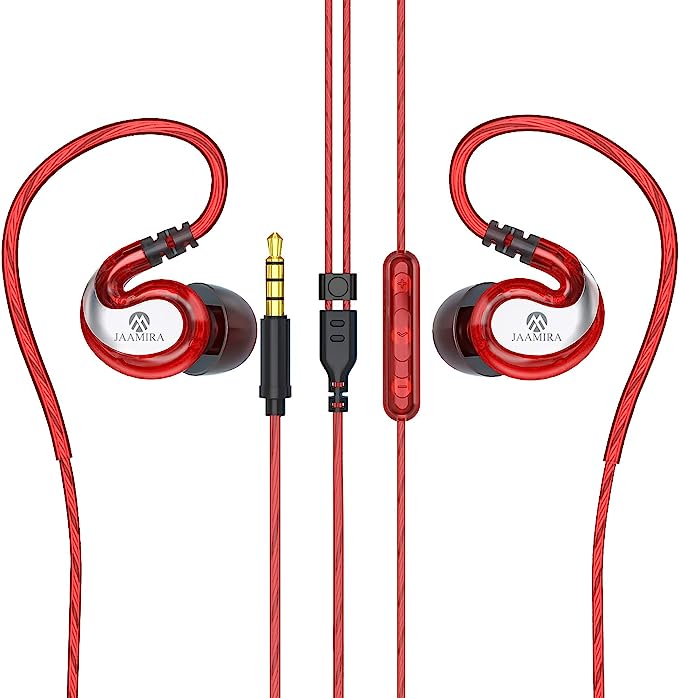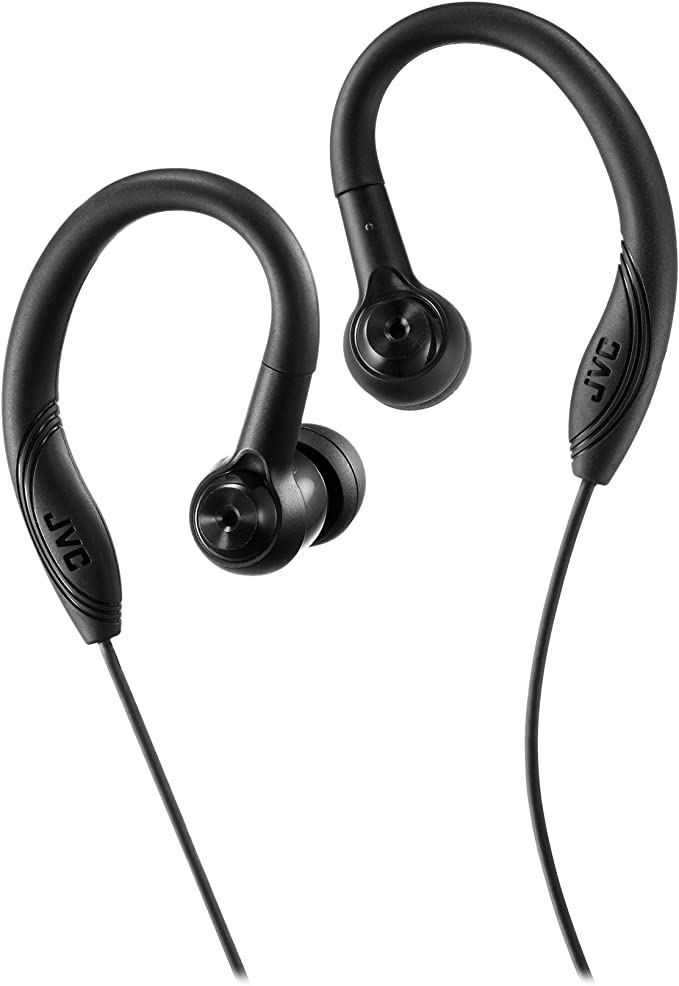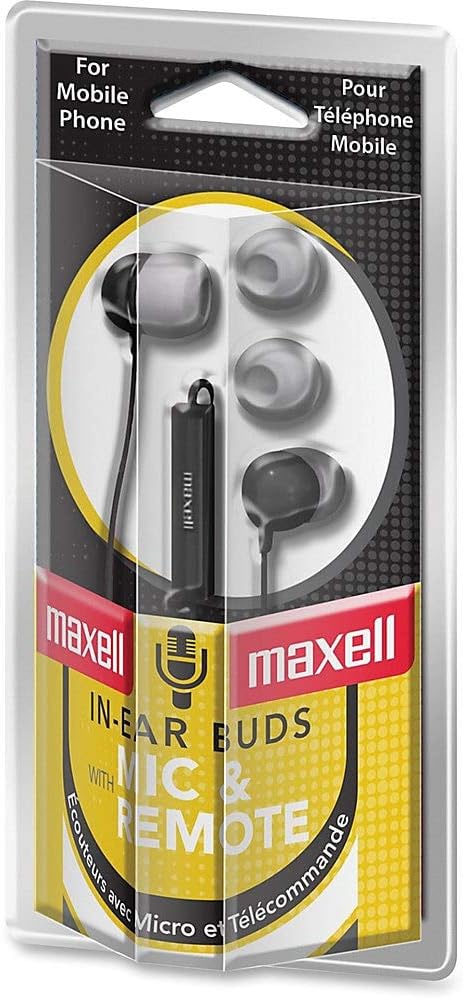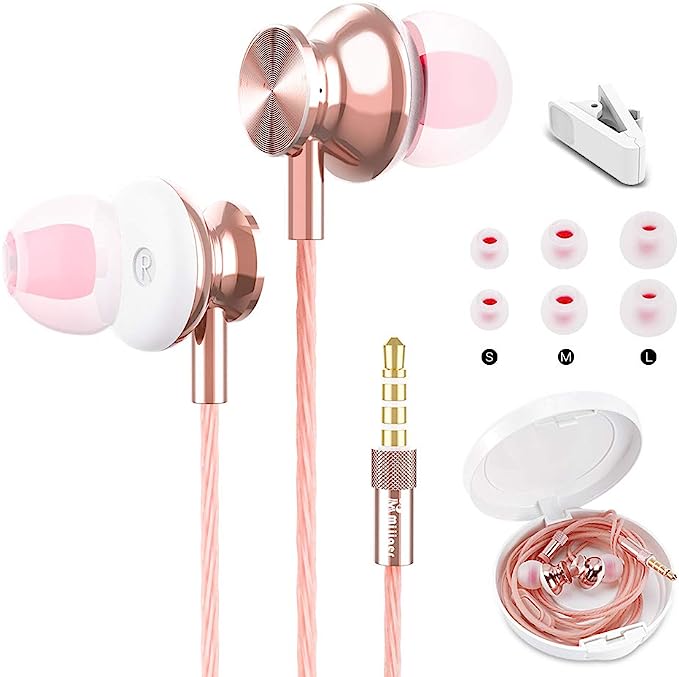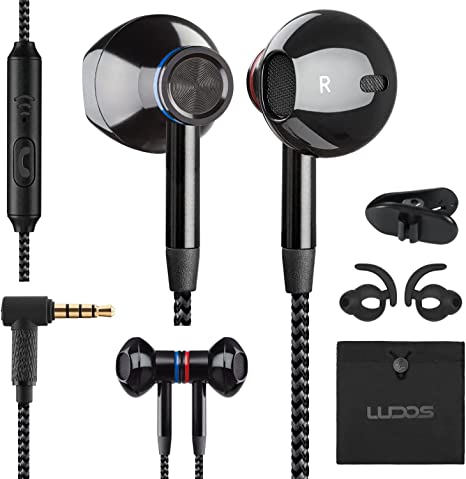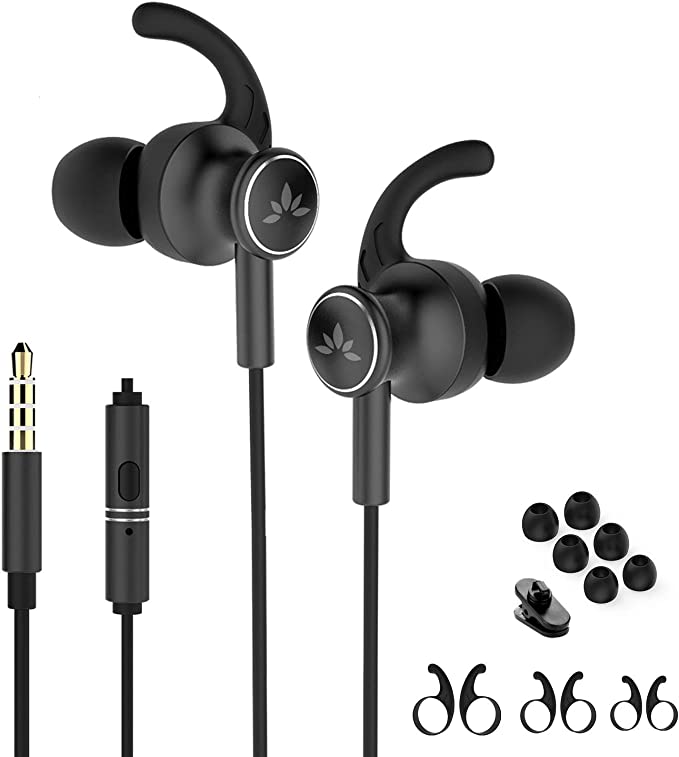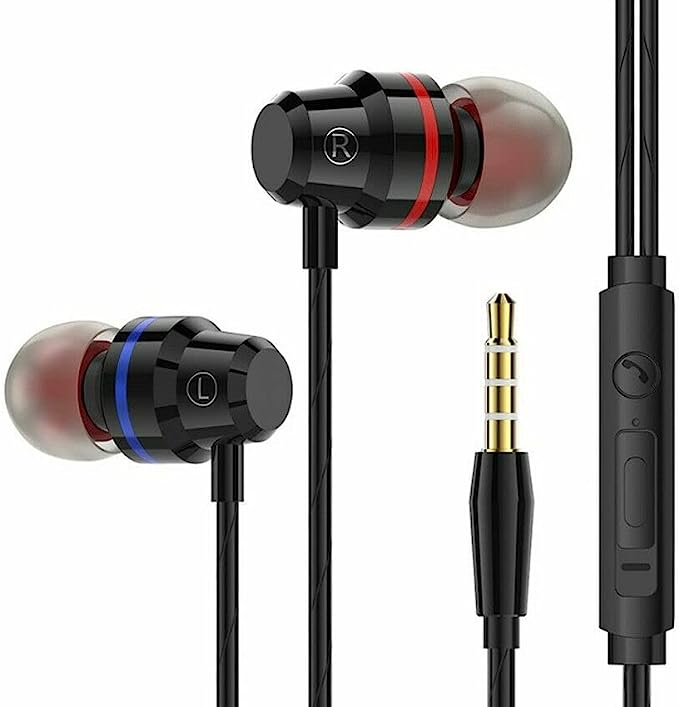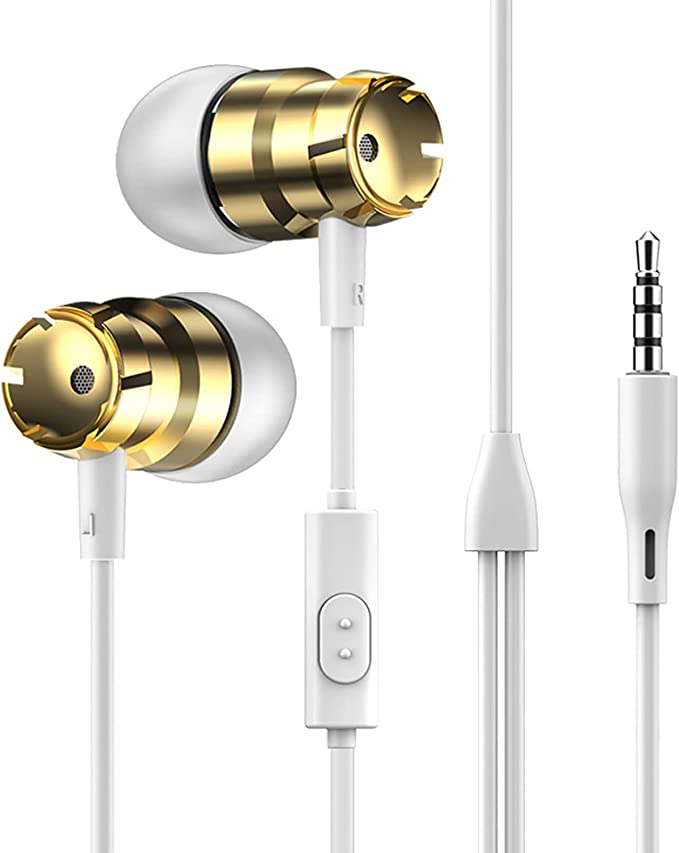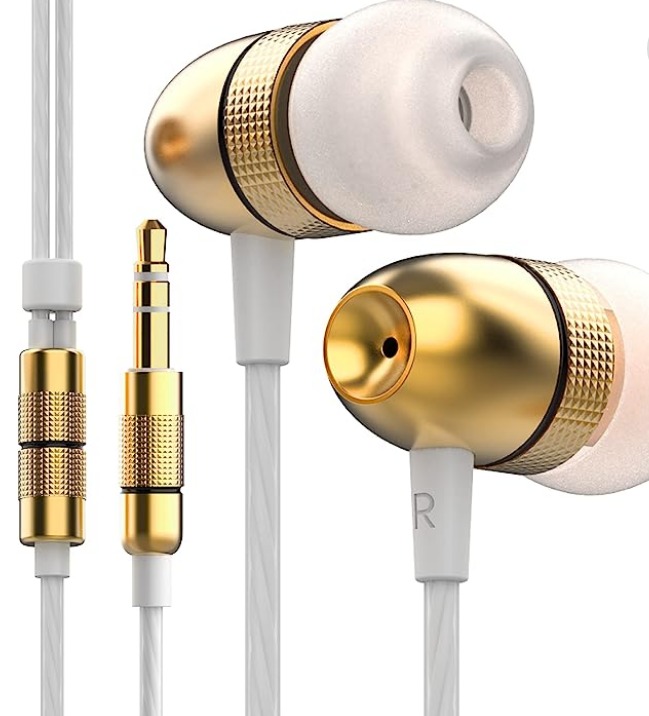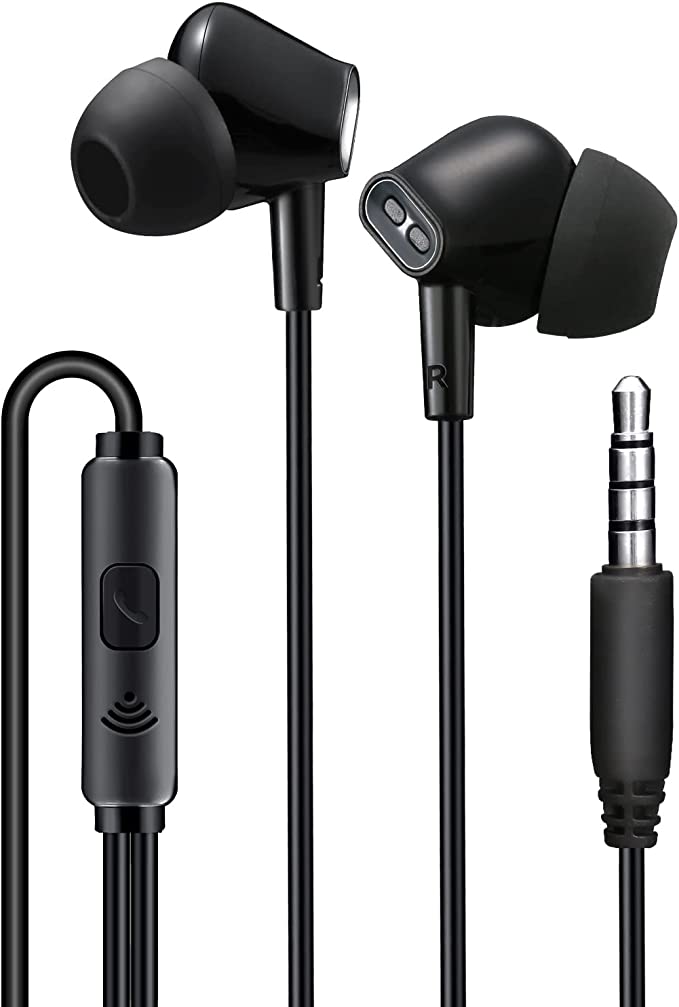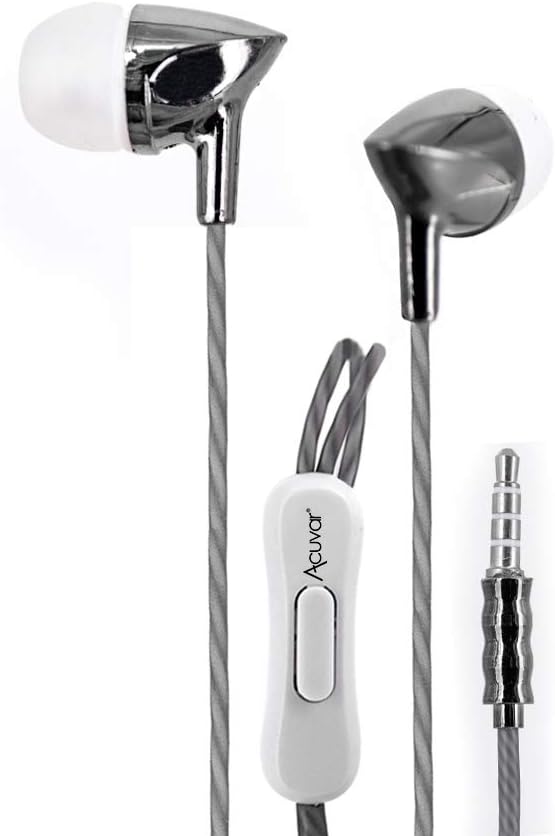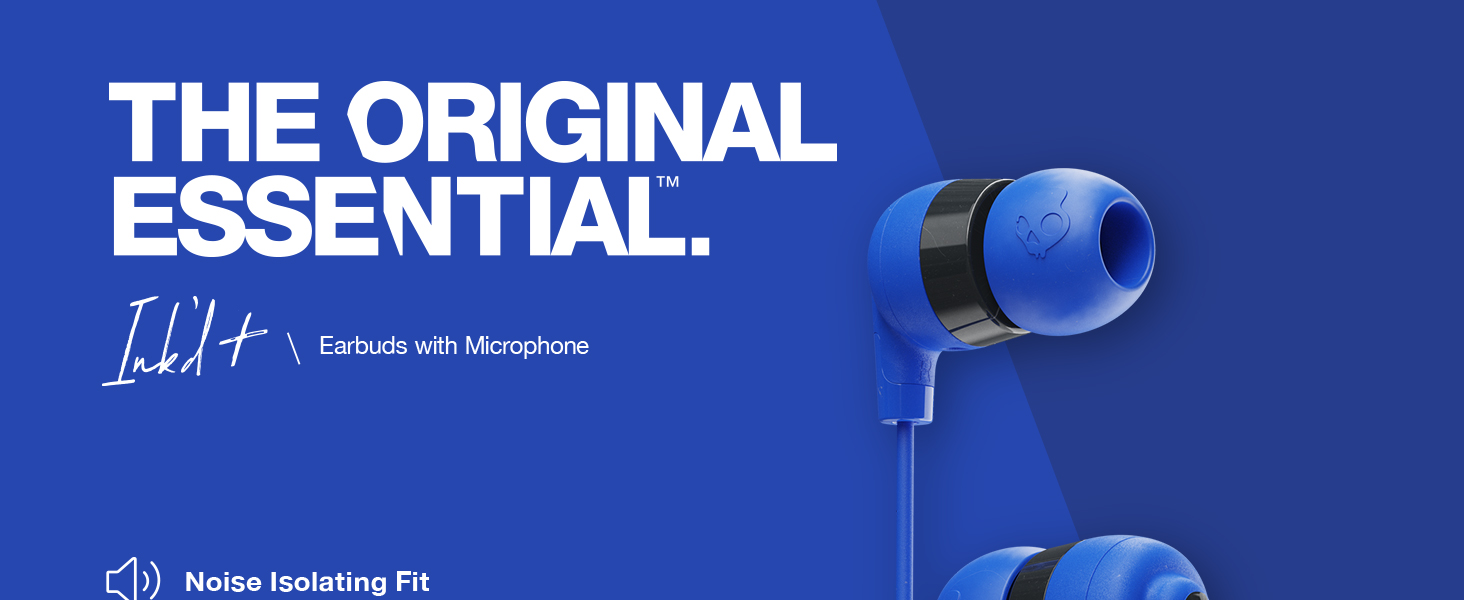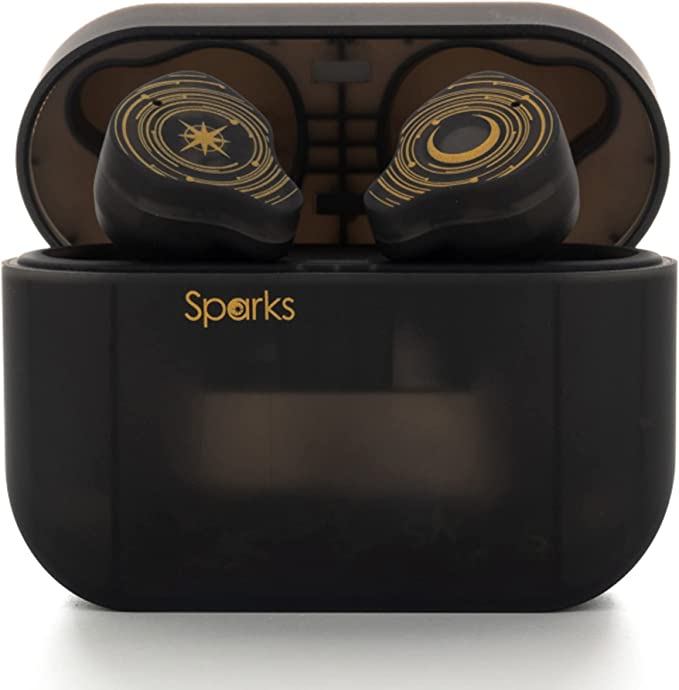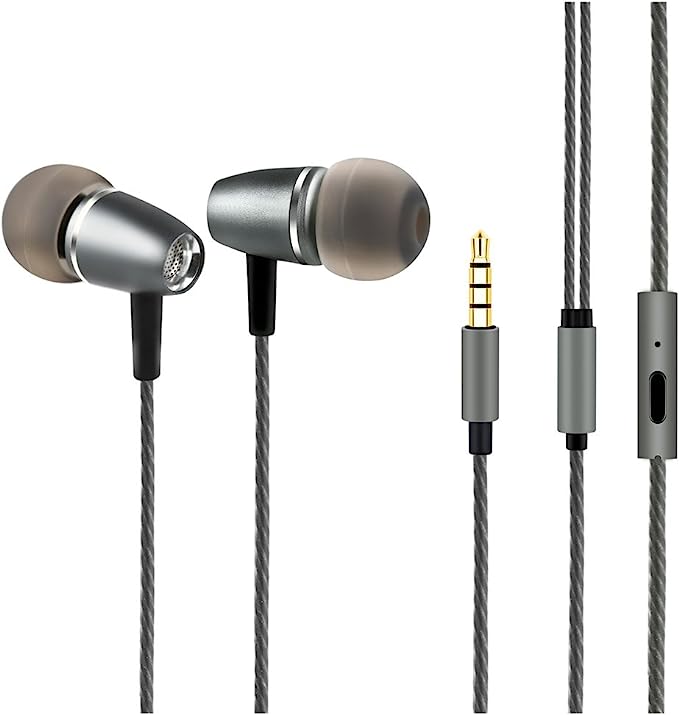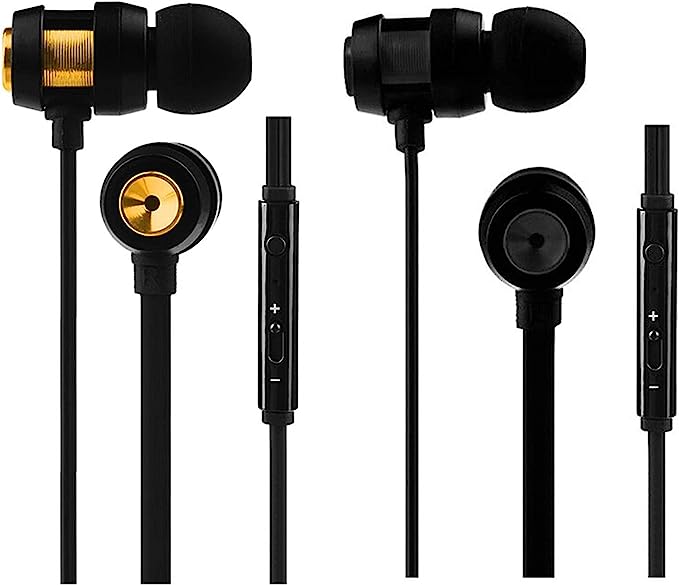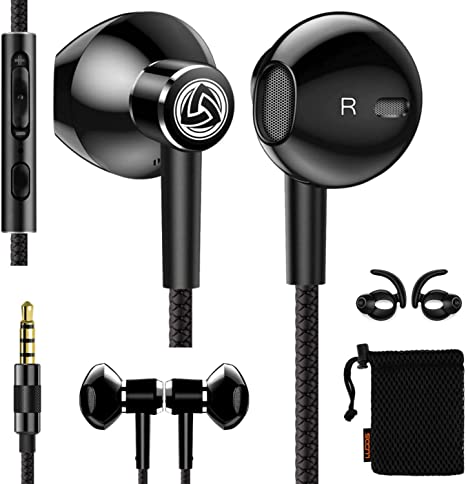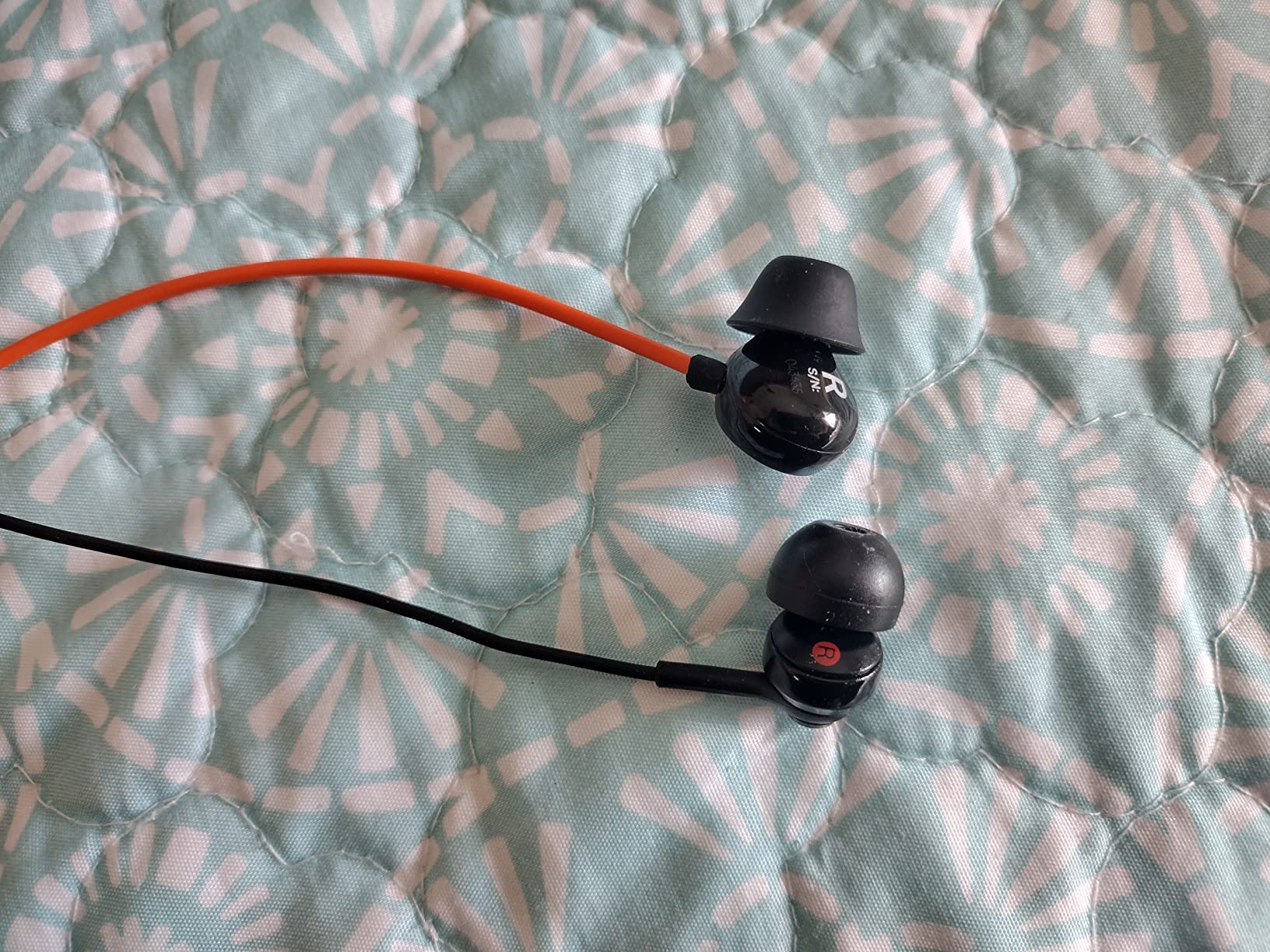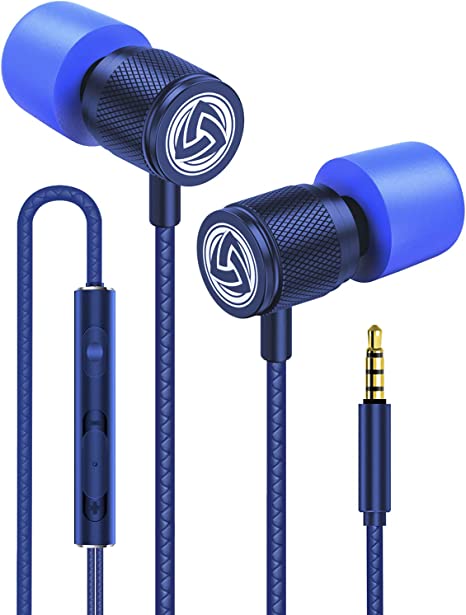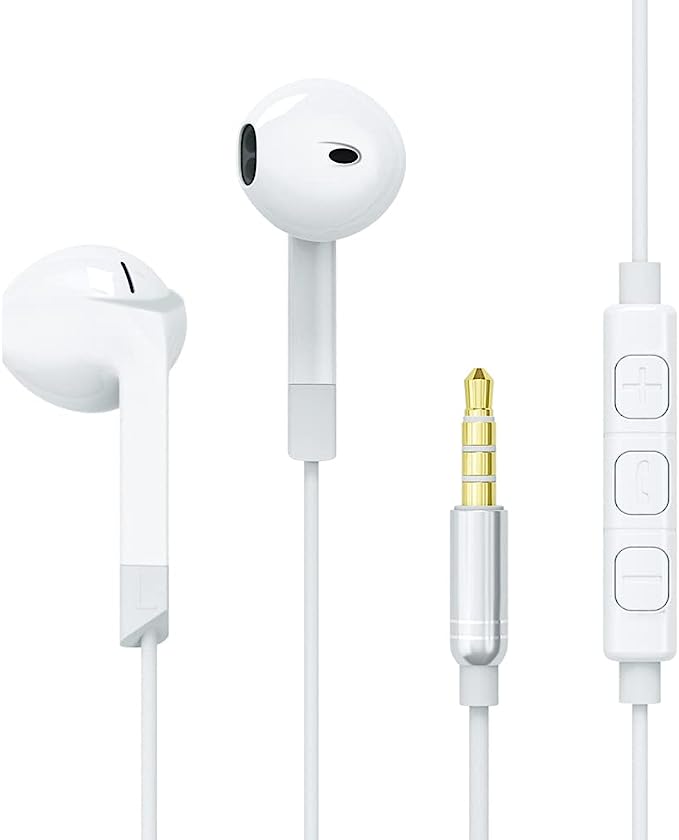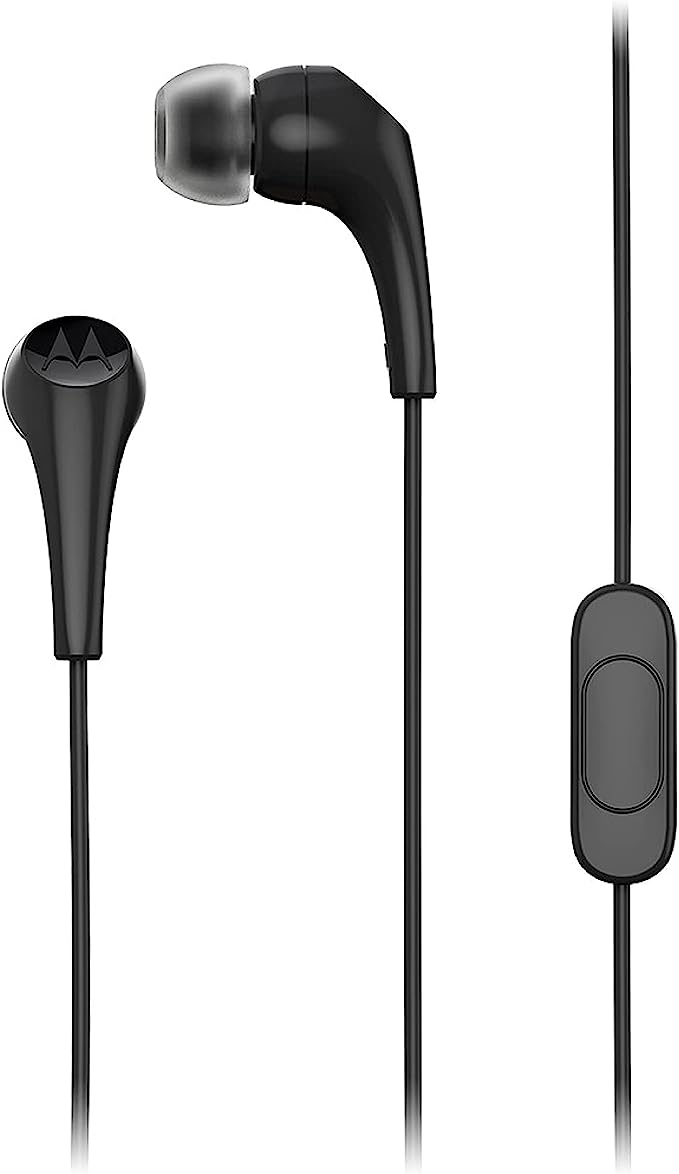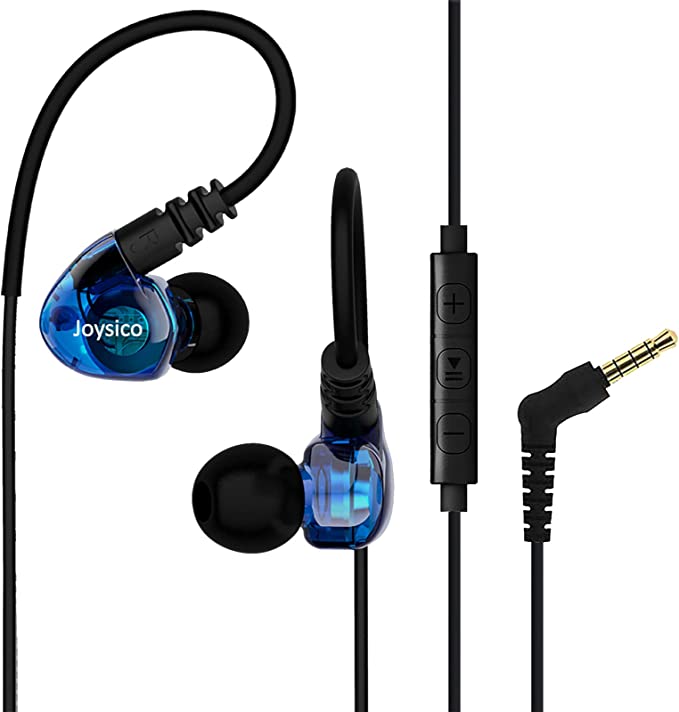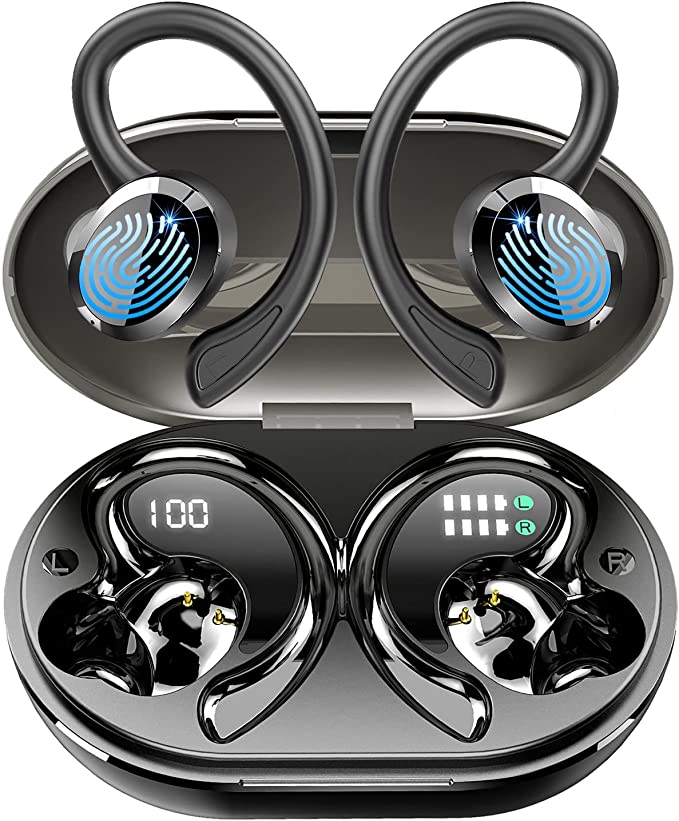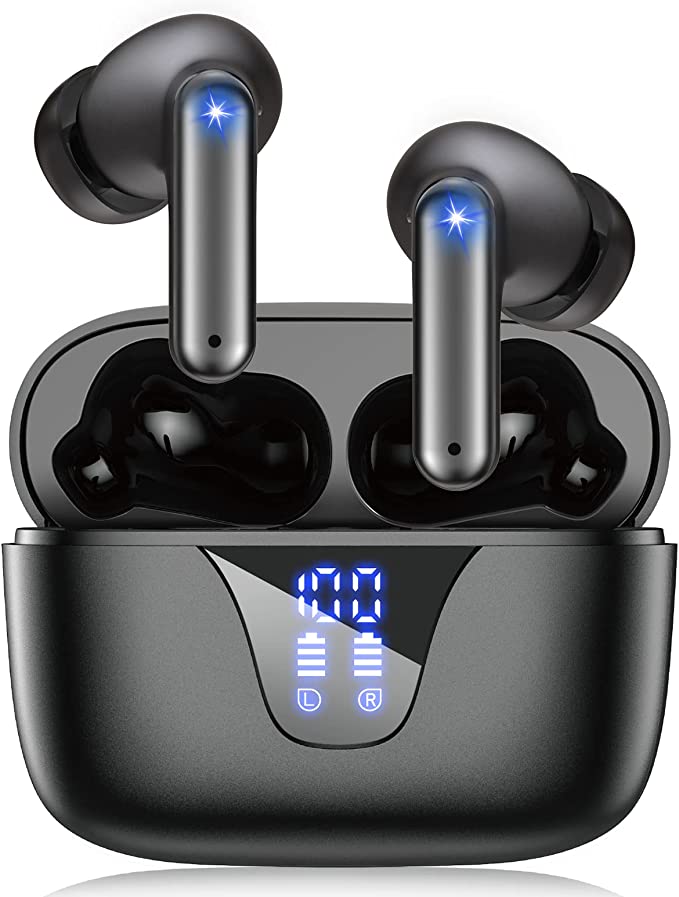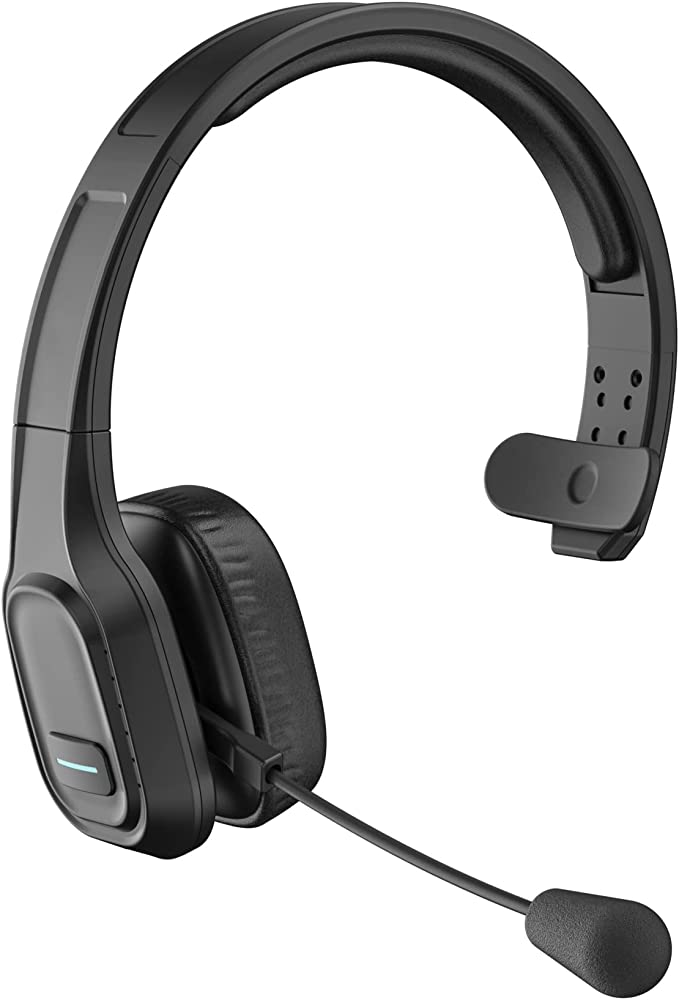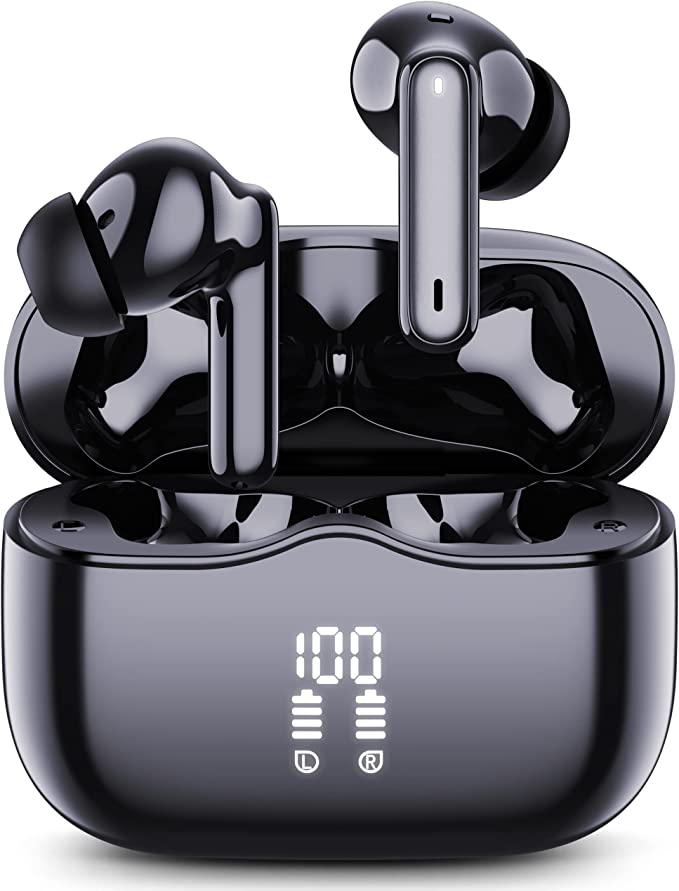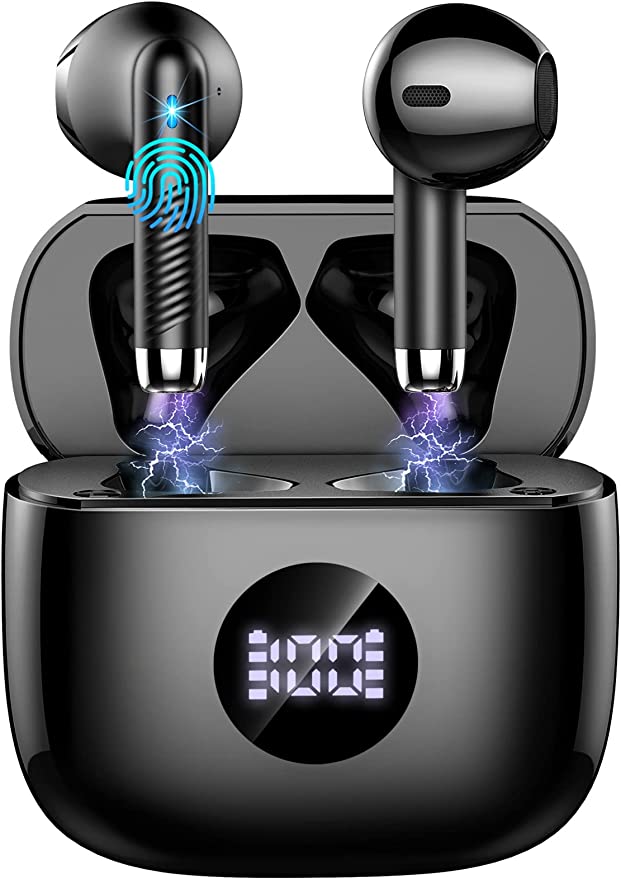DEVICEMATE SD 255 in-Ear Wired Earbuds: The Science of Immersive Sound and Ergonomic Comfort
Update on May 15, 2025, 6:06 a.m.
In the relentless hum of modern existence, where a cacophony of notifications, traffic, and chatter often vies for our attention, the desire for a personal oasis of sound has never been more profound. We seek solace in melodies, enlightenment in podcasts, and escape in aural storytelling. Our chosen conduit for these journeys is often the humble earbud, a marvel of miniaturization that promises to transport us. But what truly separates a merely functional listening device from one that genuinely enhances our auditory world? It’s rarely just a list of specifications; more often, it’s an intricate dance of science, design, and a deep understanding of how we perceive sound. Today, let’s explore these principles through the lens of a specific, straightforward example: the DEVICEMATE SD 255 in-Ear Wired Earbuds, and uncover how even seemingly simple features are rooted in a fascinating tapestry of acoustic and ergonomic science.

The Embrace of Sound: Engineering Comfort for Immersive Listening
Before a single note reaches your eardrum, the first interaction you have with any in-ear device is physical. The human ear, particularly the concha and ear canal, is an incredibly unique and sensitive landscape. It’s a delicate interface, and the “one-size-fits-all” approach often leads to discomfort, an unstable fit, or sound leakage – all detrimental to the listening experience. This is where ergonomics, the science of designing equipment to fit the human body and its cognitive abilities, takes center stage.
The DEVICEMATE SD 255 earbuds are described as having an “ergonomic design” that “is designed to conform to the shape of the inner ear.” This isn’t a trivial claim. Such a design philosophy aims to distribute pressure evenly, avoiding an intrusive or painful fit, which is crucial for those long listening sessions – perhaps on a cross-country flight, during an extended study period, or while simply unwinding with a lengthy album. Think of it as a bespoke suit versus an off-the-rack garment; the closer the alignment with natural contours, the more seamless the experience.
Further enhancing this personalized fit is the provision of S/M/L silicone ear tips. These seemingly simple accessories are, in fact, pivotal. Silicone, as a material, is chosen for its pliability, inertness, and ability to create a gentle yet effective seal. Finding the right sized tip is akin to a barista tamping coffee grounds perfectly; it’s about creating the ideal conditions for the magic to happen. This seal serves a dual purpose, both of which are scientifically critical. Firstly, it dramatically improves comfort by ensuring the earbud rests securely and softly. Secondly, and just as importantly, it creates a closed acoustic chamber between the earbud and your eardrum. This personal acoustic seal is fundamental for two key aspects of sound reproduction: robust bass response (which we’ll delve into shortly) and effective passive noise isolation. It’s the gateway to an immersive sound that feels like it’s made just for you. Historically, the quest for a perfect in-ear fit has driven innovations from custom-molded hearing aids to the sophisticated in-ear monitors (IEMs) used by professional musicians, all underscoring the profound impact of ergonomics on auditory perception.

Decoding the Groove: The Essence of Enhanced Bass and Stereo Clarity
Once a comfortable and secure fit is established, our attention turns to the sound itself. The SD 255 is “engineered for enhanced bass-driven stereo music.” Let’s unpack what this means from an acoustic science perspective.
“Enhanced bass” is a term often found in audio marketing, but what does it signify in terms of good sound engineering? It’s not merely about a louder, booming low-end that muddies the rest of the music. True enhanced bass, when well-executed, refers to the ability of the earbuds’ drivers – the tiny speakers within – to accurately and fully reproduce low-frequency sounds. These are the frequencies that give music its warmth, its visceral punch, and its emotional foundation. Think of the deep resonance of a cello, the throb of a bass guitar, or the foundational beat of an electronic track. The perception of bass is also deeply intertwined with that aforementioned acoustic seal; without it, low-frequency sound waves can easily escape before they are fully perceived, leaving the music sounding thin or anemic. The drivers in the SD 255, coupled with the sealed environment created by the correctly-sized ear tip, aim to deliver these low frequencies with richness and impact, allowing you to feel the music as much as you hear it. This is a principle well-understood in psychoacoustics, the study of how humans perceive sound; low frequencies often contribute more to the perceived “fullness” or “power” of a sound than just its raw volume.
Then there’s “dynamic stereo reproduction.” Stereo sound, a standard for decades, relies on delivering two distinct audio channels, one to each ear. This isn’t just about having sound in both ears; it’s about creating an auditory illusion – a soundstage. A well-rendered stereo image can provide a sense of width, depth, and the placement of individual instruments and vocals within a virtual space. It’s the difference between a flat, one-dimensional sound and one that feels expansive and immersive, as if the musicians are performing around you. The “dynamic” aspect refers to the ability to reproduce both soft and loud passages with fidelity, capturing the nuances and variations in intensity that make music engaging.
However, a focus on bass should not come at the expense of other frequencies. The promise of “rich, crisp, clear sound quality” implies a balance. The mid-range frequencies are crucial for the clarity of vocals and the body of most instruments, while high frequencies provide detail, airiness, and sparkle – the shimmer of a cymbal, the breath of a flute. A truly good earbud, even one emphasizing bass, strives for a coherent and intelligible soundscape across the entire audible spectrum.

Building Your Sanctuary: The Quiet Power of Passive Noise Isolation
Our modern world is rarely quiet. Whether you’re on a bustling commute, in an open-plan office, or even at home with ambient household sounds, external noise can intrude upon your listening sanctuary, forcing you to increase the volume to potentially unsafe levels to overcome it. This is where noise isolation becomes invaluable.
The DEVICEMATE SD 255 boasts “extraordinary noise blocking capability.” Given its design, this refers to passive noise isolation. Unlike active noise cancellation (ANC), which uses sophisticated electronics and microphones to create “anti-noise” waves, passive isolation is a matter of physics – a physical barrier. The same ergonomic design and snug-fitting silicone ear tips that ensure comfort and optimal bass response also serve to block out a significant amount of ambient sound. Think of it like fitting double-glazed windows in your home; the better the seal and the more substantial the barrier, the less outside noise intrudes.
The benefits of effective passive noise isolation are manifold. Firstly, it allows you to listen to your audio content at lower, safer volumes because you’re not competing as much with external sounds. This is crucial for long-term hearing health. Secondly, by reducing the masking effect of ambient noise, it allows for a clearer perception of the subtle details and nuances within your music or podcast. The “rich, crisp, clear sound quality” mentioned earlier is significantly easier to achieve and appreciate when the sonic canvas is less cluttered by unwanted noise. This creates a more immersive and focused listening experience, effectively building a personal “cone of silence” around you.
The Enduring Connection: Why Wired Still Inspires
In an era increasingly dominated by wireless technology, the DEVICEMATE SD 255’s commitment to a “wired” connection via a “3.5mm jack plug” might seem anachronistic to some. However, the venerable 3.5mm jack, a resilient survivor in the world of audio connectors since its popularization with the Sony Walkman in 1979 (though its origins go back even further to telephone switchboards in the 19th century!), still holds compelling advantages.
From a signal integrity perspective, a direct wired connection typically offers a pure, unadulterated path for the audio signal from the source device to the earbud drivers. There’s no digital-to-analog conversion happening within the earbuds themselves (as with many Bluetooth devices), no potential for compression artifacts that can sometimes plague wireless audio codecs, and no concerns about wireless interference. For many audiophiles and those who prioritize pristine sound quality, this directness is a significant draw. The product description mentions a “straight-line gold jack plug for superior signal transfer”; gold plating is indeed used in audio connectors because it resists corrosion and provides excellent conductivity, helping to maintain signal integrity over time.
Furthermore, wired earbuds like the SD 255 have no batteries to charge. This means they are always ready when you are, free from the anxiety of a dying battery индикатор during a critical listening moment. They also inherently have zero latency attributable to the connection itself, which can be important for watching videos or playing games where audio-visual sync is paramount.
Of course, the modern smartphone landscape means that for some devices, particularly newer Apple models, a “Lightning adapter” is required, as DEVICEMATE rightly notes. Yet, the 3.5mm jack remains a ubiquitous standard on a vast array of other devices: laptops, desktop computers, tablets, MP3 players, portable CD/DVD players, and more, ensuring broad compatibility.
The choice to produce these earbuds with “No Mic” is also a deliberate design decision. For individuals whose primary use case is focused, uninterrupted listening – be it for music appreciation, audiobooks, academic lectures, or meditation – the absence of a microphone can be a feature, not a flaw. It simplifies the design, potentially reduces cable clutter, and ensures that the earbuds are purely dedicated to the art of listening.
Beyond the Moment: Durability and the Ritual of Listening
An earphone, especially one used daily, becomes a trusted companion. The claim of “Durable Earphones” speaks to an aspiration for longevity. While the specific materials of the SD 255 aren’t detailed beyond the silicone tips, general principles of earphone durability often involve the quality of the cable (its resistance to tangling, kinking, and breaking), robust strain reliefs at critical stress points (like the jack and where the cable enters the earbud housing), and a resilient earbud housing itself. These elements contribute to an earphone’s ability to withstand the rigors of daily commutes, workouts, or just being tossed into a bag.
Complementing this is the inclusion of a “Storage Case.” This is far more than a mere accessory; it’s a practical guardian for your audio investment. A good case protects the earphones from being crushed, keeps the cable neatly wound (preventing those frustrating tangles that can also stress the wires), and provides a dedicated spot for spare ear tips. Using a case can significantly extend the lifespan of your earbuds and, for some, even adds a small, satisfying ritual to the practice of listening – a moment of care for a tool that brings so much enjoyment. It’s a simple yet effective way to “secure your digital investment,” as the manufacturer puts it. The thoughtful detail that the earphones themselves are a consistent white, while the protective case offers a splash of color (like “Buccaneer Red”), adds a touch of personalization to this practical aspect.

Coda: The Informed Ear, The Enriched Experience
The DEVICEMATE SD 255 in-Ear Wired Earbuds, on the surface, present a straightforward proposition: a comfortable, good-sounding, wired listening solution. Yet, as we’ve explored, even their most basic features are underpinned by established principles of acoustic science, ergonomic design, and practical engineering. From the critical importance of a personalized seal for both comfort and bass fidelity, to the physics of passive noise isolation, and the enduring benefits of a direct wired connection, science is quietly at work.
Understanding these underlying mechanisms doesn’t diminish the magic of listening; rather, it enriches it. It empowers us as consumers to make more informed choices, to appreciate the often-invisible engineering that goes into crafting our personal audio experiences. In a world saturated with complex technology, there’s a certain elegance in a well-crafted tool that simply and reliably connects us more deeply to the sounds that shape our lives, offering a small symphony of science and sensation directly to the informed ear.

